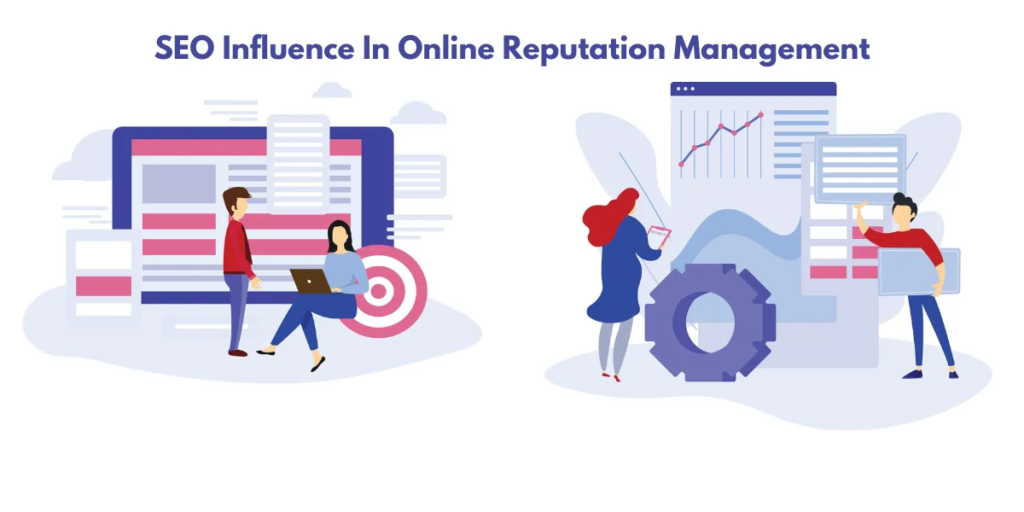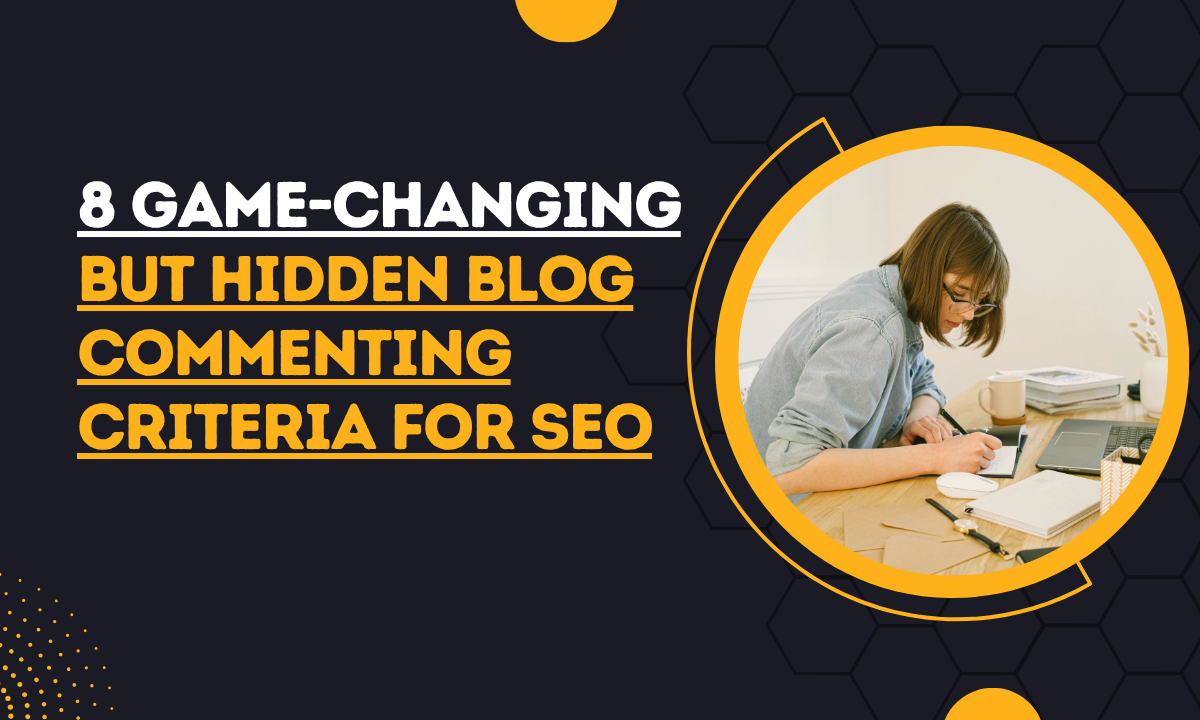8 Game-Changing but Hidden Blog Commenting Criteria for SEO
Hidden blog commenting criteria are the unsung filters that can significantly enhance your SEO strategy and audience engagement.
If you’re still relying solely on Domain Authority or PageRank to guide your commenting choices, you’re only scratching the surface.
Many subtle yet crucial elements influence whether your comments get noticed, drive traffic, or build authority.
In this article, we’ll explore those lesser-known but vital criteria so you can move beyond the basics and make your blog commenting efforts more targeted, effective, and rewarding.
1. Engagement Level of the Blog Community
Is the blog you’re targeting buzzing with interaction?
A high DA site with a silent comment section won’t do much for you.
But when readers are actively commenting, debating, and exchanging ideas? That’s where your input gets seen. It gets read. And sometimes, it even gets replies.

Source: Rreedamst200
Why it matters
When readers see your thoughtful comment in a lively thread, they may click through to your profile or link.
That’s traffic you didn’t have to fight for.
Plus, search engines notice engagement too—and assign more relevance to those pages.
So your backlink carries more contextual weight.
2. DoFollow vs NoFollow Links
Not all backlinks are created equal.
You probably know that “DoFollow” links are more valuable in passing SEO equity than “NoFollow” ones.
While most blogs use NoFollow by default for comments (to reduce spam), there are still platforms and plugins that allow DoFollow comment links.
DoFollow / No Follow Links Explained
| Aspect | Use Case | Example | Explanation |
|---|---|---|---|
| 1. DoFollow passes SEO equity | Boosting domain authority through editorial links | A guest post on HubSpot linking to your homepage | Search engines treat DoFollow links as endorsements, helping your site rank higher. |
| 2. NoFollow does not pass link juice (directly) | Participating in forums or blog comments | A link from a comment on Neil Patel’s blog | These links won’t directly boost SEO rankings but contribute to visibility and traffic. |
| 3. DoFollow links are preferred in SEO strategy | Building high-authority backlinks for better rankings | Getting featured in an industry roundup with DoFollow links | They increase your page’s relevance and ranking in search engine results. |
| 4. NoFollow links still drive referral traffic | Engaging on Reddit, Quora, or Medium | A helpful answer on Quora with a link to your blog | While not counted for SEO equity, such links attract relevant users and potential conversions. |
| 5. Google treats some NoFollow links as hints | Earning links from trusted platforms | Link on Wikipedia, which is NoFollow by default | Google may choose to crawl or consider these links in some contexts due to source authority. |
| 6. Blog comments are NoFollow by default | Commenting on blogs for exposure and discussion | Leaving a valuable comment on Moz blog | Most blogging platforms (like WordPress) apply NoFollow to reduce spam and manipulation. |
| 7. Some plugins/communities allow DoFollow in comments | Leveraging DoFollow-friendly communities | Commenting on DoFollow blogs like CommentLuv-enabled sites | These communities reward genuine engagement with DoFollow links, though they are rare. |
| 8. Tools help identify DoFollow/NoFollow | Evaluating backlink opportunities | Using Chrome’s “NoFollow” extension on a competitor’s backlink profile | Quickly reveals the type of links on a page, helping you focus on quality link sources. |
How to identify them
Use browser extensions like “NoFollow” for Chrome to quickly scan comment sections.
Or simply inspect the comment HTML. If the rel attribute says “nofollow,” well, now you know.
That said, don’t obsess. Even NoFollow links can bring referral traffic and diversify your backlink profile.
3. Frequency of New Posts
When was the last time this blog published something new?
Blogs that publish posts daily or regularly offer more chances to comment.
More importantly, new content tends to attract more readers—and more comment readers.
That means higher odds your comment gets noticed.
The SEO ripple effect
Fresh content also gets crawled more often by Google.
So your comment (and the backlink it includes) might be indexed faster and more frequently.
4. Author Reputation and Influence
Who’s behind the blog?
A comment on an influential blogger’s post carries more weight than one on a generic content mill.
That’s not just about SEO—it’s about association.
When readers see your name on authoritative sites, you borrow some of that shine.

Source: ProfileMonk
More than just SEO
Engaging with well-known voices in your industry can lead to networking, mentions, or even invitations to guest post.
Reputation is contagious. Be seen where the experts gather.
5. Comment Visibility (Above the Fold vs Hidden)
Here’s something people forget: not all comments get equal screen time.

Source: PurplePass
Visibility hierarchy matters
Some blogs hide comments under tabs or behind a “load more” link.
Others push older comments to the bottom.
And then there are those rare gems where the comment section feels like a real forum—right there, under the post, fully visible.
If your comment isn’t easily seen, it might as well not exist.
6. Technical Health of the Blog
Is the site fast, mobile-friendly, and secure?
If a blog takes forever to load or breaks on mobile, users bounce—and your comment gets buried in the debris.
Worse, search engines might devalue the page entirely.
Why tech matters
A healthy site structure helps your comment stay live, visible, and crawlable.
And it reflects well on your brand.
Would you want your name showing up on spammy, broken blogs?
7. Comment Linking Policy
Are you allowed to leave a link?
Some blogs let you link in the name field.
Others allow a contextual link in your comment body.
Many don’t allow any at all.
Don’t get flagged as spam
Be aware of each site’s comment guidelines.
If you’re leaving a link, make sure it’s relevant and adds value to the conversation.
Otherwise, it’ll get removed—or worse, your comment won’t be approved at all.
8. Global or Local Audience Match
Who reads the blog?
If your services are region-specific, commenting on globally-targeted blogs may not help much.
Conversely, if you have an international product or brand, local niche blogs might be too narrow.
Know your audience
Make sure the blog’s readership aligns with your ideal visitor.
That ensures your comment—and any traffic you get—serves a real purpose.
It’s not just about being seen. It’s about being seen by the right people.
FAQs
1. Do these hidden blog commenting criteria replace basic factors like DA and PR?
No, they supplement them. Also, think of DA and PR as gatekeepers, while the hidden blog commenting criteria help you fine-tune your selection.
2. How do I track which blogs offer DoFollow links?
Browser extensions like “NoFollow” help identify link types instantly. You can also inspect the HTML manually.
3. Is it bad to comment on NoFollow blogs?
Not at all. NoFollow links still offer exposure, traffic, and backlink diversity—all beneficial in a balanced SEO strategy.
4. What’s the risk of commenting on low-quality or technically broken blogs?
Low-quality blogs may harm your site’s trustworthiness or lead to spam associations. Prioritize technically sound, reputable sites.
5. Should I always leave a link in my comment?
Only if it adds value to the discussion. Forced or unrelated links can get flagged as spam and hurt your credibility.
6. Can commenting help me build relationships with influencers?
Yes—when done consistently and thoughtfully. Insightful comments can lead to direct replies, shoutouts, and future collaborations.
Related Posts
Shocking Truth: Thoughtful Blog Commenting is an SEO Goldmine!
Most marketers ignore blog comments, but savvy ones know they build authority, backlinks, and trust.
Learn how to craft impactful, non-spammy comments that actually grow your SEO value.
How to Keep Trolls Out: Secrets to Blog Comment Moderation
Tired of spam, hate, and off-topic rants in your comments? You’re not alone.
Discover powerful tools and strategies to protect your blog space with dignity and control.
The Ultimate Guide to Blog Commenting for Better SEO in 2025 – Top Sites & Pro Tips
Get ahead of the curve with smart blog commenting tactics that still work in 2025.
We list top blogs that allow DoFollow, plus tips to maximize your reach without sounding robotic.
Master Blog Moderation with Comment Filters Today
Comment filters aren’t just tech—they’re your first line of defense against bots and trolls.
Learn how to set smart rules that keep your comment section clean and constructive.
Conclusion
Hidden blog commenting criteria are often the difference between a wasted effort and a truly effective SEO move. Choosing the right blogs to comment on requires more than just checking their domain metrics.
You need to understand the full picture—who’s reading, how the blog functions, and whether your voice will be seen and heard. These behind-the-scenes factors often separate seasoned marketers from casual commenters.
By applying these insights, you not only build better backlinks but also forge real connections in your niche. Blog commenting isn’t just about SEO; it’s about visibility, credibility, and community.
Now that you’re equipped with both foundational and advanced criteria, your blog commenting strategy can finally become deliberate, impactful, and aligned with your goals.

